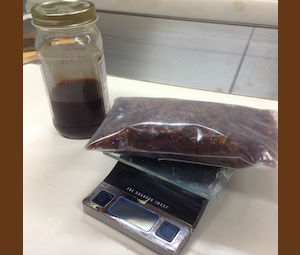17 July 2018 Hits: 4586
 “Get Started In Woodworking?” All your expensive tools look intimidating.
“Get Started In Woodworking?” All your expensive tools look intimidating.
Many people ask me how I got started in woodworking and what I would recommend for them to get started. The first question is difficult for me since I’ve been working with wood in one way or another since I was old enough to carry nails and put my dad’s cut-offs in the scrap pile. I highly recommend growing up with someone as talented at the craft as my dad was and being surrounded by large woodworking tools. But if you are not so fortunate, start with just a few handheld power tools and hand tools. I’ve included a basic list of the minimum tools required to start woodworking in this article. You will be restricted to dimensioned lumber with these tools, but even some of the most common hardwoods are easily accessible at most of the box stores around the country. Once you have the tools, purchase “The Complete Book of Woodworking: Step-by-Step Guide to Essential Woodworking Skills, Techniques and Tips.” It is a great basic woodworking book with over 40 different projects—most can be built with the list of tools below. Each set of plans specifically indicates what tools are required to build the project. If you read the details provided in this book, you’ll be building useful furniture projects for your home or gifts as soon as you have all the necessary tools.
07 May 2018 Hits: 4685
 “My Favorite Wood” Cherry Over Time.
“My Favorite Wood” Cherry Over Time.
For the last couple of years, I’ve worked primarily with hickory and walnut because those are the woods I’ve chosen for furnishing my cabin, but I truly love cherry. About four years ago I built a pub-style table and chairs. After just a few years it has turned a beautiful deep red color, and it gets prettier every day.
The cherry trees used to build furniture are actually black cherry trees (Prunus serotine). They produce fruit, but it’s pretty bitter. They grow pretty tall (70 feet) compared to the flowering cherry trees that only grow to about 35 feet. The black cherry tree has fine grain with closed pores making it easy to work with (Woodsmith 8). For a hardwood, it is actually pretty soft—it cuts easily. It is second only to oak as the most popular wood furniture manufacturing in the U.S. (Arno “Cherry” 64). It is much easier to work with than oak.
24 April 2018 Hits: 4338
 “Making a Crosscut” Miter Saw or Tablesaw.
“Making a Crosscut” Miter Saw or Tablesaw.
Many of the Youtube makers I watch use a miter saw to make most of their crosscuts. I actually recently purchased a Jet compound sliding miter saw, but I use it primarily for cutting down rough stock. I use my tablesaw for most crosscuts. I feel like I get a more accurate cut that is easily repeatable with a stop block.
I usually use an aftermarket miter gauge from Inca. It is an excellent choice, but I also use a crosscut sled I built after watching Marc Adams’s “Tablesaw Techniques” posted on finewoodworking.com. It is an excellent series, and he has a simple way to square up the sled.
09 April 2018 Hits: 4608

Up until a few months ago, I had one go-to finish. In a previous blog, I wrote about using a three even-part blend of polyurethane, mineral spirits, and boiled linseed oil. I apply it as a wiping varnish increasing the ratio of polyurethane with each additional coat. This is a great solution, and I’ll likely still rely on it for many projects, but I’m adding another option to my finishing solutions—shellac—primarily because it is fast, easy and reasonably priced. Waiting for each coat of my oil blend to dry takes days, so I started using shellac to speed up the process.
According to Mario Rodriguez, “Shellac gets a bad rap for durability…” (Rodriguez 38). However, the great thing about shellac is it can act as a seal coat (dewaxed only) for any finish. Therefore, I can put an oil-based finish on top. Use only DEWAXED shellac as a seal coat. “Since dewaxed shellac bonds beautifully with every other finish, you can always follow it up with a wipe-on varnish to protect vulnerable surfaces” (Rodriguez 38).